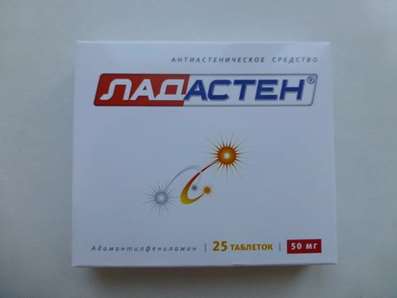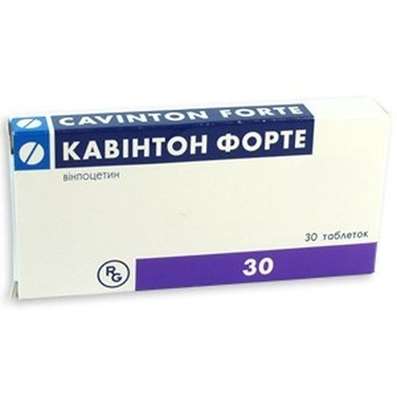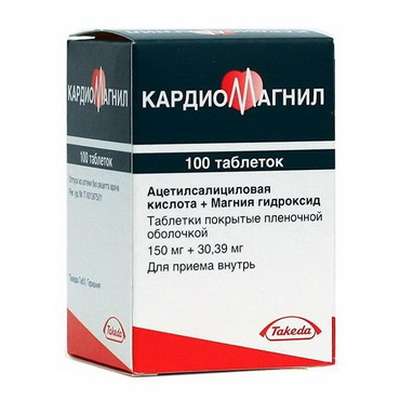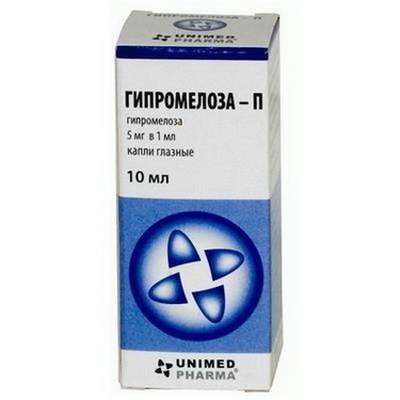Instruction for use: Abilify
I want this, give me price
Dosage form: tablets
Active substance: Aripiprazole *
ATX
N05AX12 Aripiprazole
Pharmacological group:
Neuroleptics
The nosological classification (ICD-10)
F20 Schizophrenia: Schizophrenic conditions; Exacerbation of schizophrenia; Schizophrenia; Chronic schizophrenia; Dementia praecox; Bleuler's disease; Psychotic discordant; Dementia early; The febrile form of schizophrenia; Chronic schizophrenic disorder; Psychosis of the schizophrenic type; Acute form of schizophrenia; Acute schizophrenic disorder; Cerebral Organic Insufficiency in Schizophrenia; Acute attack of schizophrenia; Schizophrenic psychosis; Acute schizophrenia; Sluggish schizophrenia; Sluggish schizophrenia with apathoabulic disorders; Acute stage of schizophrenia with excitation
F31.2 Bipolar affective disorder, current episode of mania with psychotic symptoms: Manic episode of bipolar disorder; Mania in bipolar disorders
F31.6 Bipolar affective disorder, current episode of mixed character
Composition
Tablets 1 table.
aripiprazole 5 mg; 10 mg; 15 mg; 30 mg
auxiliary substances: lactose monohydrate; ICC; corn starch; hydroxypropyl cellulose; magnesium stearate; ferric iron oxide yellow (15 mg tablets); dye iron red oxide (tablets 10 and 30 mg); lacquer aluminum blue (5 mg tablets)
in a planar cell pack of 7; in a pack of cardboard 4 packs.
Description of dosage form
Tablets 5 mg: rectangular tablets with rounded edges, blue, marked "A-007" and "5" on one side.
Tablets 10 mg: rectangular tablets with rounded edges, pink, marked "A-008" and "10" on one side.
Tablets 15 mg: round tablets of yellow color, with a bevel, marked "A-009" and "15" on one side.
Tablets of 20 mg: round tablets of white or slightly yellow color, with a facet marked "A-010" and "20" on one side.
Tablets of 30 mg: round tablets of pink color, with a facet, marked "A-011" and "30" on one side.
Pharmachologic effect
Pharmacological action - antipsychotic.
Pharmacodynamics
Aripiprazole has a high in vitro affinity for D2 and D3-dopamine receptors, 5HT1a- and 5HT2a-serotonin receptors and moderate affinity for D4-dopamine, 5HT2c- and 5HT7-serotonin, alpha1-adrenoreceptors and H1-histamine receptors. Aripiprazole is also characterized by moderate affinity for the sites of serotonin reuptake and lack of affinity for muscarinic receptors. Aripiprazole in animal experiments showed antagonism with respect to dopaminergic hyperactivity and agonism with respect to dopaminergic hypoactivity. Interaction not with dopamine and serotonin receptors can explain some clinical effects of aripiprazole.
Pharmacokinetics
Abilafia activity is mainly due to the presence of the starting material, aripiprazole. The average half-life of aripiprazole is approximately 75 hours. The equilibrium concentration is achieved after 14 days. Cumulation of the drug with multiple admission is predictable. The pharmacokinetics of aripiprazole in the equilibrium state are proportional to the dose. There were no daily fluctuations in the distribution of aripiprazole and its metabolite dehydroaripiprazole. It has been established that the main metabolite of the drug in human plasma, dehydroaripiprazole, has the same affinity for D2-dopamine receptors as aripiprazole.
Aripiprazole is rapidly absorbed after ingestion of Abilifai, while the Cmax of the drug in the plasma is reached after 3-5 hours. The absolute bioavailability of Abilifai tablets is 87%. Food intake for the bioavailability of aripiprazole is not affected.
Aripiprazole is intensively distributed in tissues, with an apparent volume of distribution of 4.9 l / kg. At a therapeutic concentration of more than 99%, aripiprazole binds to serum proteins, mainly with albumin. Aripiprazole does not affect the pharmacokinetics and pharmacodynamics of warfarin, i.e. does not displace warfarin from its association with blood proteins.
Aripiprazole undergoes pre-systemic metabolism only to a minimal extent. Aripiprazole is metabolized in the liver in three ways: by dehydrogenation, hydroxylation and N-dealkylation. According to in vitro experiments, the dehydrogenation and hydroxylation of aripiprazole occurs under the action of the enzymes CYP3A4 and CYP2D6, and N-dealkylation is catalyzed by the enzyme CYP3A4. Aripiprazole is the main component of the drug in the blood. In the equilibrium state, the AUC of dehydroaripiprazole is approximately 39% of the aripiprazole AUC in plasma.
After a single administration of labeled 14C-aripiprazole, approximately 27% and 60% of radioactivity is determined in urine and feces, respectively. Less than 1% of unchanged aripiprazole is determined in urine and approximately 18% of the dose taken is unchanged in the form of feces. The total clearance of aripiprazole is 0.7 ml / min / kg, mainly due to excretion by the liver.
Indication of the drug Abilify
acute attacks of schizophrenia (treatment and maintenance therapy);
acute manic episodes of type I bipolar disorder (treatment);
in patients with type I bipolar disorder who have recently undergone a manic or mixed episode (maintenance therapy).
Contraindications
hypersensitivity to aripiprazole or any other component in the formulation.
age to 18 years.
Carefully:
patients with cardiovascular diseases (CHD or previous myocardial infarction, heart failure and conduction disorders);
patients with cerebrovascular diseases and conditions predisposing to hypotension (dehydration, hypovolemia and taking antihypertensive drugs), in connection with the possibility of developing orthostatic hypotension;
patients with convulsive seizures or suffering from diseases in which cramps are possible;
patients with an increased risk of hyperthermia, for example, with intense physical exertion, overheating, taking anticholinergic drugs, with dehydration (due to the ability of neuroleptics to disrupt thermoregulation);
patients with an increased risk of aspiration pneumonia (due to the risk of impaired motor function of the esophagus and aspiration);
patients suffering from obesity and having diabetes in the family.
Application in pregnancy and lactation
Adequate and well-controlled studies in pregnant women have not been conducted.
Abilithia can be taken during pregnancy only if the potential benefit of the application exceeds the potential risk to the fetus.
Aripiprazole penetrates the milk of rats. There is no data on the penetration of aripiprazole into the female milk. Breastfeeding when using the drug is not recommended.
Side effects
The frequency of side effects is given in accordance with the following scale: very rarely - ≤0.01%; rarely - ≥0.01% and <0.1%; not often - ≥0.1% and <1%; often - ≥1% and <10%; very often - ≥10%.
Cardiovascular system: very rarely - fainting; rarely - vasovagal syndrome, enlargement of the heart, atrial flutter, thrombophlebitis, intracranial hemorrhage, cerebral ischemia; infrequent - bradycardia, palpitations, myocardial infarction, QT interval prolongation, cardiac arrest, hemorrhages, atrial fibrillation, heart failure, AV blockade, myocardial ischemia, deep vein thrombosis, phlebitis, extrasystole; often - orthostatic hypotension, tachycardia.
Digestive system: very rarely - increased activity of ALT and AST; rarely - esophagitis, gum bleeding, tongue inflammation, bloody vomiting, intestinal bleeding, duodenal ulcer, cheilitis, hepatitis, enlarged liver, pancreatitis, perforation of the intestine; sometimes - increased appetite, gastroenteritis, difficulty swallowing, flatulence, gastritis, caries, gingivitis, hemorrhoids, gastroesophageal reflux, gastrointestinal hemorrhage, periodontal abscess, swelling of the tongue, stool incontinence, colitis, rectal bleeding, stomatitis, ulceration in the mouth, cholecystitis, fecaloma, candidiasis of the oral mucosa, cholelithiasis, belching, stomach ulcer; often - dyspepsia, vomiting, constipation; very often - nausea, loss of appetite.
Immune system: very rarely - allergic reactions (anaphylaxis, angioedema, itching and urticaria).
Musculoskeletal system: very rarely - increased activity of creatine phosphokinase, rhabdomyolysis, tendonitis, tendo bursitis, rheumatoid arthritis, myopathy; sometimes - pain in the joints and bones, myasthenia gravis, arthritis, arthrosis, muscle weakness, spasms, bursitis; often - myalgia, convulsions.
Nervous system: rarely - nonsense, euphoria, bucco-glossal syndrome, akinesia, depression of consciousness down to loss of consciousness, decreased reflexes, obsessive thoughts, malignant neuroleptic syndrome; infrequent - dystonia, muscle twitching, weakening of concentration, paresthesia, limb tremor, impotence, bradykinesia, low / increased libido, panic reactions, apathy, dyskinesia, memory impairment, stupor, amnesia, stroke, hyperactivity, depersonalization, dyskinesia, legs (akathisia), myoclonus, depressed mood, increased reflexes, slowing of the function of thought, increased sensitivity to irritants, hypotension, violation of the oculomotor reaction; often - dizziness, tremor, extrapyramidal syndrome, psychomotor agitation, depression, nervousness, increased salivation, hostility, suicidal thoughts, manic thoughts, unsteady gait, confusion, resistance to the implementation of passive movements (cogwheel syndrome); very often - insomnia, drowsiness, akathisia.
Respiratory system: rarely hemoptysis, aspiration pneumonia, increased sputum production, dry nasal mucosa, pulmonary edema, pulmonary embolism, hypoxia, respiratory insufficiency, apnea; not often - asthma, epistaxis, hiccough, laryngitis; often shortness of breath, pneumonia.
Skin and skin: rarely - maculopapular rash, exfoliative dermatitis, urticaria; not often - acne, vesiculobuleznaya (bubble) rash, eczema, alopecia (alopecia), psoriasis, seborrhea; often - dry skin, itching, excessive sweating, skin ulcerations.
Sense organs: rarely - increased lacrimation, frequent flashing, external otitis media, amblyopia, deafness, diplopia, eye hemorrhage, photophobia; not often - dry eyes, eye pain, ringing in the ears, inflammation of the middle ear, cataracts, loss of taste, blepharitis; often - conjunctivitis, pain in the ears.
Genito-urinary system: rarely - pain in the breast, cervicitis, galactorrhea, anorgasmia, burning sensation in the urinary tract, glycosuria, gynecomastia (breast enlargement in men), urolithiasis, painful erection; rarely - cystitis, urinary frequency, Leucorrhœa, urinary retention, hematuria, dysuria, amenorrhea, premature ejaculation, vaginal bleeding, vaginal candidiasis, renal insufficiency, uterine bleeding, menorrhagia, albuminuria, kidney stones, nocturia, polyuria, urination; often - incontinence.
The body as a whole: rarely - sore throat, stiffness in the back, heaviness in the head, candidiasis, stiffness in the throat, Mendelssohn's syndrome, heat stroke; not often - pelvic pain, facial swelling, malaise, photosensitivity, jaw pain, chills, stiffness of the jaw, bloating, tension in the chest; often - flu-like syndrome, peripheral edema, pain in the chest, in the neck.
Metabolic and eating disorders: rare - hyperkalemia, gout, hypernatremia, cyanosis, urine acidification, hypoglycemic reaction; rarely - dehydration, edema, hypercholesterolemia, hyperglycemia, hypokalemia, diabetes mellitus, elevated ALT levels, hyperlipidemia, hypoglycemia, thirst, increased blood levels of urea, hyponatremia, increased AST, increased levels of alkaline phosphatase, iron deficiency anemia, elevated creatinine, bilirubinemia, increased level of lactate dehydrogenase, obesity; often - weight loss, increase in the level of creatine phosphokinase.
Interaction
There was no significant effect of H2-blocker histamine receptor famotidine, which causes potent inhibition of gastric acid secretion in the stomach, on the pharmacokinetics of aripiprazole.
Various routes of metabolism of aripiprazole are known, including with the participation of enzymes CYP2D6 and CYP3A4. In studies in healthy humans, potent inhibitors of CYP2D6 (quinidine) and CYP3A4 (ketoconazole) reduced aripiprazole clearance when administered by 52% and 38%, respectively. Therefore, the dose of aripiprazole should be reduced when used in combination with inhibitors of CYP3A4 and CYP2D6.
Receiving 30 mg aripiprazole together with carbamazepine, a potent inducer of CYP3A4, accompanied by a decline at 68 and 73% Cmax and AUC aripiprazole, respectively, and a decrease by 69 and 71% Cmax and AUC degidroaripiprazola its active metabolite respectively. You can expect a similar effect on other powerful inductors CYP3A4 and CYP2D6.
The in vitro metabolism of aripiprazole not involved enzymes CYP1A1, CYP1A2, CYP2A6, CYP2B6, CYP2C8, CYP2C9, CYP2C19 and CYP2E1, in connection with which it is unlikely its interaction with drugs and other factors (such as smoking), able to activate or inhibit these enzymes.
Simultaneous administration of lithium or valproate with 30 mg of aripiprazole daily had no clinically significant effect on the pharmacokinetics of aripiprazole.
In clinical studies, aripiprazole at doses of 10-30 mg / day had no significant effect on the metabolism of substrates of CYP2D6 (dextromethorphan), CYP2C9 (warfarin), CYP2C19 (omeprazole, warfarin) and CYP3A4 (dextromethorphan). In addition, aripiprazole and its main metabolite dehydroaripiprazole did not alter metabolism involving the enzyme CYP1A2 in vitro. The clinically significant effect of aripiprazole on drugs metabolized with these enzymes is unlikely.
Dosing and Administration
Inside, regardless of food intake.
Schizophrenia: It is recommended that Abilifai be administered at an initial dose of 10 or 15 mg once daily. The maintenance dose is 15 mg / day. In clinical trials, the effectiveness of the drug in doses of 10 to 30 mg / day is shown.
Manic episodes in bipolar disorder: the drug should be taken, starting at a dose of 15 or 30 mg / day. Dose changes, if necessary, should be performed at intervals of at least 24 hours. In clinical trials, the effectiveness of the drug in doses of 15-30 mg / day for manic episodes during admission for 3-12 weeks was demonstrated. Safety of doses above 30 mg / day in clinical trials was not evaluated.
When observing patients with type I bipolar disorder and manic or mixed episodes that had no symptoms with Abilifai (15 or 30 mg / day at the initial dose of 30 mg / day) for 6 weeks, a favorable effect of such supportive therapy. Periodically, patients should be examined to determine whether to continue supporting therapy.
It is not required to change the dosage of the drug when prescribing the drug to patients with renal insufficiency, hepatic insufficiency (class A, B and C according to the Child-Pugh classification).
Although experience in the use of the drug in patients over the age of 65 years is limited, dose adjustment for this category of patients is not required.
Overdose
In clinical studies, cases of unintentional or deliberate overdose of aripiprazole with a single dose of up to 1080 mg, not accompanied by a fatal outcome, are described.
Symptoms: nausea, vomiting, asthenia, diarrhea and drowsiness. Clinically significant changes in basic physiological parameters, laboratory parameters and ECG were not detected in hospitalized patients.
The postmarketing experience of a single admission of up to 450 mg of aripiprazole in adult patients suggests a possible development of tachycardia. In addition, cases of overdose of aripiprazole in children (reception up to 195 mg) are described. Potentially dangerous symptoms of overdose include extrapyramidal disorders and transient loss of consciousness.
Overdose requires maintenance therapy, adequate airway patency, oxygenation, effective ventilation and symptomatic treatment. Drug reactions should be considered. Immediately, monitoring of cardiac performance with ECG registration should be initiated to detect arrhythmias. After a confirmed or suspected overdose of aripiprazole, careful medical attention is necessary until all symptoms disappear.
Activated charcoal (50 g), administered 1 hour after administration of aripiprazole, reduced AUC and Cmax of aripiprazole by 51 and 41%, respectively, which allows recommending its use in overdose.
Although there is no reliable data on the use of hemodialysis in case of an overdose of aripiprazole, the favorable effect of this method is unlikely. aripiprazole is not excreted by the kidneys in an unchanged form and is largely associated with plasma proteins.
Special instructions
Suicide attempts: a tendency to suicidal thoughts and attempts is characteristic of psychoses, so drug therapy must be combined with careful medical supervision. Abilifee should be discharged in a minimum amount sufficient to treat the patient; this will reduce the risk of overdose.
Late dyskinesia: the risk of developing tardive dyskinesia increases with the duration of therapy with neuroleptics, so if Abiliphae symptoms of late dyskinesia appear, reduce the dose of this drug or cancel it. After the withdrawal of therapy, these symptoms may temporarily increase or even appear for the first time.
Malignant neuroleptic syndrome: in the treatment of neuroleptics, incl. aripiprazole, a life-threatening symptom complex known as "malignant neuroleptic syndrome" (CNS) is described. This syndrome is manifested by hyperpyrexia, muscle rigidity, mental disorders and instability of the autonomic nervous system (irregular heartbeats and BP, tachycardia, sweating and cardiac arrhythmias). In addition, sometimes there is an increase in the activity of creatine phosphokinase, myoglobinuria (rhabdomyolysis), and acute renal failure. In case of symptoms of NSA or unexplained fever, all antipsychotics, incl. Abilifay, should be abolished.
Hyperglycemia and diabetes mellitus: hyperglycemia, sometimes expressed and associated with ketoacidosis, which can lead to hyperosmolar coma and even death, was noted in patients taking atypical antipsychotics. Although the association between the admission of atypical antipsychotics and hyperglycemic disorders is unclear, patients who have diabetes mellitus should regularly perform a blood glucose test when taking atypical antipsychotics. Patients who are at risk for diabetes (obesity, having diabetes in the family) should take the blood glucose level at the beginning of the course and periodically during the administration of the drug when taking atypical antipsychotics. Any patient taking atypical antipsychotics needs constant monitoring of symptoms of hyperglycemia, including increased thirst, frequent urination, polyphagia, and weakness.
Impact on the ability to drive and work with moving machinery
As with the appointment of other neuroleptics, when appointing aripiprazole, the patient should be warned about the dangers of working with moving mechanisms and driving.
Storage conditions of the drug Abilify
In a dry place, at a temperature of 15-30 ° C.
Keep out of the reach of children.
Shelf life of the drug Abilify
3 years.
Do not use after the expiry date printed on the package.

 Cart
Cart





